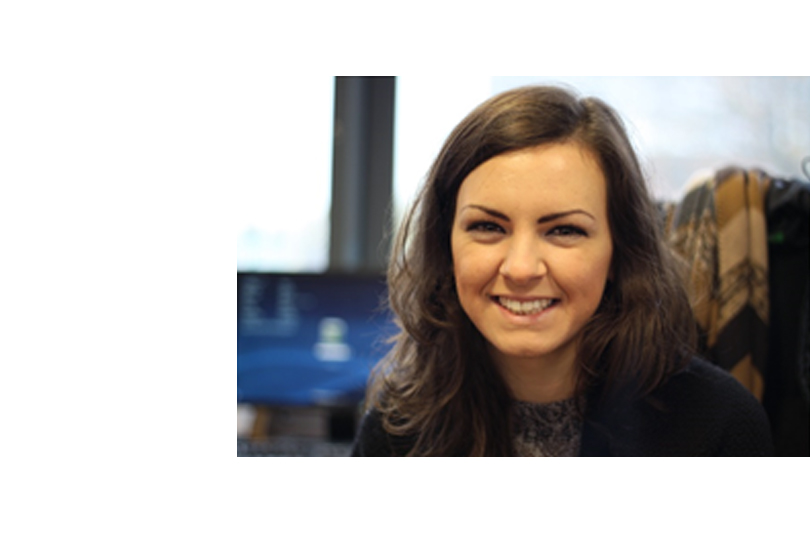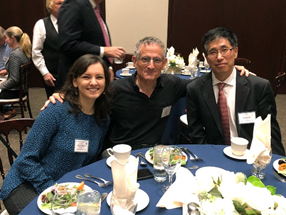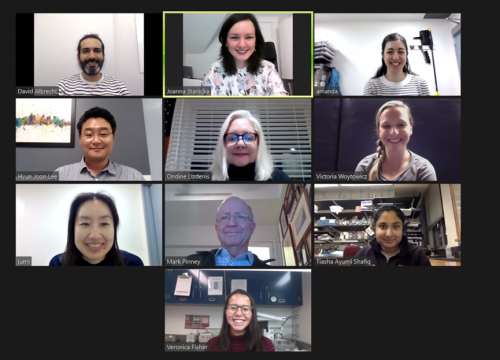In conversation with Praxis SCI Incubate cohort member AXONIS Therapeutics

AXONIS Therapeutics CEO & Co-Founder Joanna Stanicka, PhD, talks with us about restoring movement in paralyzed patients after spinal cord injury (SCI) through tissue reactivation and neuron regeneration.
What lead you here in terms of education, experience, and people you met along the way?
My journey into medical sciences, research and commercialization began when I was 10 years old in Poland. My cousin Ania got very sick with an aggressive form of rheumatoid arthritis. We were told she’d likely be in a wheelchair for the rest of her life. She was signed up for clinical trials with a new disease-modifying biological therapy, and within a few months the progression of her disease completely stopped. It was remarkable. Today Ania is a mother, runs her own house and – most importantly – is an independent person. To see a healthy person become completely dependent and in pain within a few months, then see them relieved so quickly with the right treatment was life-changing. I knew at that moment I wanted to pursue a career in science.
When I was 19 years old, I left Poland on a 40-hour bus trip to Ireland and went onto complete my PhD in cancer research at University College Cork. My focus was how genes and proteins impact the healthy and disease states of cells and applying this knowledge to developing treatments – particularly for cancer. While in Ireland, I was headhunted by Dr. Zhigang He’s laboratory at Boston Children’s Hospital/Harvard Medical School. What I was seeing in cancer cells, he was seeing for neuro-regeneration. I joined his lab to carry out this regeneration research and led a genome-wide CRISPR screening, which was a huge project involving many people.
In 2019, as we were coming to the end of the screening, Corey Goodman was looking for someone to lead a start-up company called Axonis, spun out from Dr. He’s research. Dr. He asked me if I wanted to lead Axonis, and after some thought, I decided to accept the position.

Joanna, Corey (current Axonis Executive Chairman and Co-Founder) and Zhigang celebrating Zhigang’s Reeve-Irvine Research Medal for his scientific contribution to the SCI field in 2019. It was a long night of discussions on Axonis and how to start the KCC2 program.
There are about 300,000 chronically injured SCI patients in US, and about 70 to 80 percent of them experience either pain, spasticity or both. Therapies to relieve these chronic patients from paralysis, as well as pain and spasticity, are desperately needed.
It’s been a transformative experience. I love everyday. It doesn’t matter how many hours I work. I am so privileged to be around such inspiring, hard-working and successful people, and we are all driven by our united vision to make a real difference for SCI patients, their families, and the global healthcare system.
How are your customers and potential customers challenged in their current situation?
Despite the fact that SCI impacts thousands of people worldwide every year, we still do not have any approved drugs to treat paralysis. This mainly stems from the complexity of neurotrauma.
Meanwhile the impact to those who sustain a SCI is not just paralysis – it is also pain and spasticity, which is the term used to describe when muscles stiffen and cannot be controlled. To further put this into context, there are about 300,000 chronically injured SCI patients in US, and about 70 to 80 percent of them experience either pain, spasticity or both. Therapies to relieve these chronic patients from paralysis, as well as pain and spasticity, are desperately needed.
After an SCI, there is an imbalance. Neurons may get excited or inhibited at the wrong moments. Through this oral drug, we are working to reactivate the signals to allow the correct balance to occur.
What specific solution is your company providing?
Axonis is developing an oral drug to restore motor function, as well as reduce pain and spasticity, after an incomplete SCI.
The drug works by rebalancing excitation and inhibition of neurons in the spared tissue. In a typical nervous system, our neurons have a correct balance between being excited and inhibited. But after an SCI, there is an imbalance. Neurons may get excited or inhibited at the wrong moments. Through this oral drug, we are working to reactivate the signals to allow the correct balance to occur. The drug acts on paralysis, as well as pain and spasticity.

